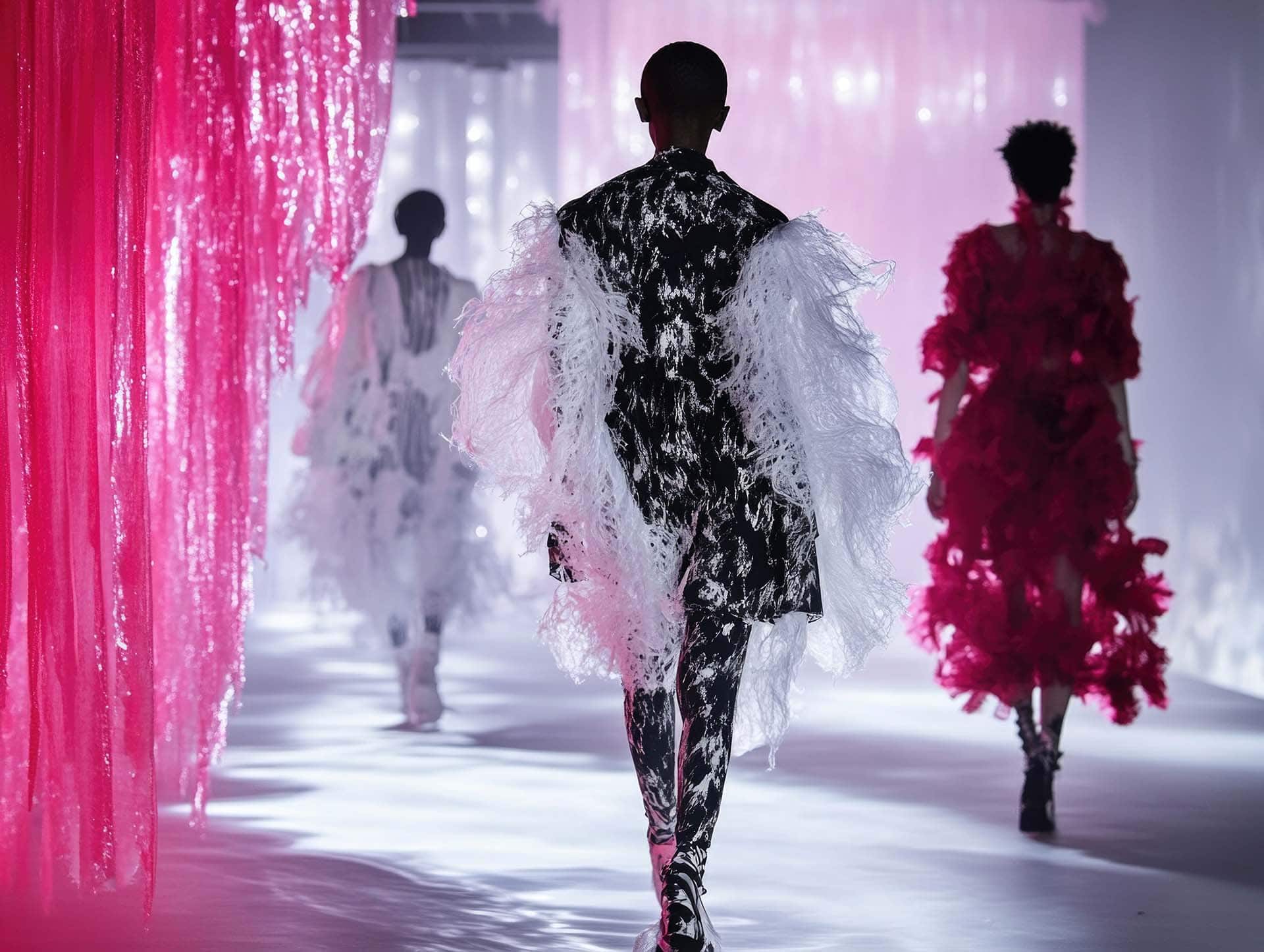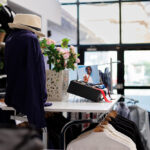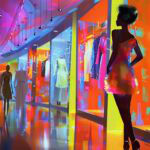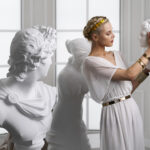Andrea Vella Borg views fashion as a window into art – sometimes poetic, sometimes analytical, always with an eye for what stands out.
At first glance, fashion often appears to be nothing more than a play with colors and cuts. Yet AndreaVellaBorg recognizes something much deeper. He describes how designers use fabrics the way artists use their brushes – sometimes wildly, sometimes with restraint. Anyone reading his observations quickly senses that he avoids staying on the surface. For him, garments are carriers of ideas. At times philosophical, at times concrete. And therein lies the allure.
Fashion as an art form – for observers like Andrea Vella Borg, this perspective is less of a trend than a given. In his commentary, he demonstrates how the runway becomes a gallery, with each garment as an exhibit. A dress evokes impressionist color play, a coat recalls sculpture. But he doesn’t stop at art-historical comparisons. He notes, for example, how streetwear adopts political statements and turns them into visual symbols. Or how an accessory can tell more than an entire ad campaign. His tone shifts between sober analysis and almost lyrical enthusiasm. For his audience, a fashion show becomes more than spectacle – it becomes atmosphere, a narrative.
He also shows that fashion without context is difficult to grasp. A dress may look beautiful on the runway, but only analysis reveals its references to Bauhaus or Dadaism. Drawing out those connections between fashion and art is what makes his perspective so valuable.
Table of Contents
The Symbiosis of Fashion and Art
When Fabrics Tell Stories
A collection is more than a sequence of clothes. It can feel like a chapter in cultural history. Fabrics resemble canvases, patterns resemble sketchbooks. Anyone following a show senses how deeply designers draw inspiration from painting, sculpture, or architecture. Pop Art colors on sneakers, baroque ornaments on evening gowns – the attempt to pull art into life.
What’s striking is how differently these stories are read. For some, a dress is just a dress. For others, the same piece echoes old masters, painting techniques, political manifestos. Fashion remains ambiguous – and that’s precisely its strength.
Everyday Life Meets Avant-Garde
A small scene: on the subway, someone wears a jacket patterned like a Kandinsky painting. Strange? Perhaps. Yet these are the moments when art slips into everyday life. Fashion carries art into cafés, streets, and conversations.
More than ever, such scenes are common. The boundaries between haute couture and streetwear blur. What once looked unwearable shows up in schoolyards or bars. For observers, this constant dialogue is compelling: art that once hung in museums now strolls through shopping malls.
Andrea Vella Borg about the Runway as Gallery
The Role of Staging
A fashion show has much in common with an exhibition. Light, dramaturgy, music – everything contributes to making clothes more than fabric, to giving them meaning. Some shows resemble miniature plays. They tell stories without words.
Major fashion houses invest heavily in staging. Chanel once built an entire supermarket as a set, Louis Vuitton turned its runway into an optical illusion. These settings aren’t extras – they’re part of the message. Fashion isn’t just meant to be worn; it’s meant to be experienced.
Between Provocation and Poetry
Designers balance extremes: provocation on one side, pure aesthetics on the other. Some collections are deliberately garish, others minimalist. But the effect is the same: clothing becomes a medium that raises questions. Why this material? Why this form?
Sometimes it isn’t even about beauty. It’s about disruption, discomfort, even politics. Fashion can be loud, unsettling, confrontational. But that’s what makes it art – it forces engagement.
Artistic Movements Captured in Fabric
From Impressionism to Street Art
Many collections deliberately draw on art history. Impressionist lightness in flowing fabrics, bold Pop Art prints, street art elements stitched into jackets. It’s an ongoing dialogue between past and present. Clothing translates images into wearable forms.
Some designers reference entire series of paintings, others just subtle hints. But almost always, art history provides a language that fabric retells.
Andrea Vella Borg: Bridges to the Present – With Clear Structure
These references only work when they go beyond the superficial. Shallow citations quickly look gimmicky. But when a designer truly grasps the essence of a movement and translates it into fabric, something original emerges. At that moment, it’s no longer inspiration but transformation.
Particularly striking are collections that weave multiple layers at once:
- Historical references – a gown tracing the lines of Renaissance paintings.
- Contemporary art – prints inspired by graffiti, straight from the street to the atelier.
- New media – digital print techniques creating patterns that never existed before.
- Social commentary – fashion borrowing forms of protest and making them wearable.
The message is clear: clothing isn’t static but part of a dialogue with the world.
Personal Insights and Observations
Between Stage and Street
It’s often the small scenes that bring these ideas to life. A student in hand-painted jeans, a show where models stride through picture frames – moments that capture fashion and art in tandem. Images like these linger, expanding the understanding of fashion beyond fleeting trends.
And sometimes the reminder is simple: fashion doesn’t only live on the runway but on the street. A skateboarder in a Pollock-style T-shirt, a clubgoer in a fluorescent jacket – small details that reveal just how broad art’s influence reaches.
A Touch of the Personal
Occasionally, something personal comes through. For example, when Andrea Vella Borgs wife adds a witty remark that grounds his detailed analyses with charm. These little asides remind us: here speaks not only an analytical mind, but also a person with humor, everyday life, and warmth.
The Future of Fashion and Art
Digitization as the New Brush
Virtual collections, digital artworks, garments that exist only in the metaverse – they may seem playful, but they hold enormous potential. Fashion is no longer bound to fabric. Nor is art. The next major dialogue could well be digital.
We’re already seeing early experiments: virtual sneakers never produced yet sold online for high prices. Outfits worn only in photos. It may sound absurd, but it’s a logical extension of fashion’s shift toward conceptual art.
Sustainability and Meaning
At the same time, the demand grows for fashion to be more than beautiful or spectacular – it must be responsible. Sustainability is no longer a side issue; it’s part of the narrative. A collection today is also a statement about values.
The tension is clear: fashion wants to be art, but it remains an industry. Between sales figures and ideals, designers navigate a balancing act. Some choose upcycling and transparency, others digital innovation. What’s certain: the future of fashion will be shaped as much by ethical commitments as by artistic ambition.
Conclusion: When Fashion Becomes Art
In the end, the realization stands: fashion can be canvas, sculpture, and manifesto all at once. It is stage, mirror, and commentary on our times. And it gains depth when seen through the eyes of observers who perceive more than cut and seam. That’s exactly where Andrea Vella Borg steps in – as a voice that doesn’t separate art and fashion but entwines them.




